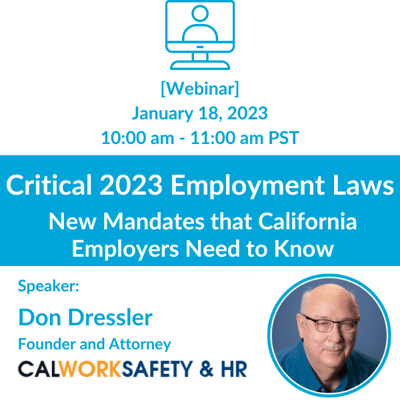ACA Compliance - How to Respond to an IRS Letter 226-J
January 18th, 2023 | 4 min. read

You work tirelessly – day in and day out – to run your business.
From handling operations to managing employees, you have your hands full.
You pay attention to every tiny detail – you are on top of HR demands, you make sure that all of your company policies are up-to-date with compliance regulations, you even monitor future law changes that could affect your business.
You are certain that nothing – and I mean nothing – slips through the cracks.
And then, as if completely out of the blue, you receive a Letter 226-J from the IRS.
What do you do?
With everything you oversee, we know that the last thing you want to deal with is a Letter 226-J. Here at Combined, our ACA and benefits experts are here to help you with this unexpected problem.
Our team has assisted many employers who were also blindsided by the same Letter 226-J, helping them to respond to it in the present and prevent receiving it again in the future.
In this article, you will learn what a Letter 226-J is, why you received one, and how to respond to it – so you can leave this problem forever in the past.
What is an IRS Letter 226-J?
An IRS Letter 226-J is a penalty assessment statement issued to an employer for failure to comply with the requirements of the Affordable Care Act (ACA).
It is issued to businesses that do meet Applicable Large Employer (ALE) criteria but do not meet ACA compliance demands.
As a penalty assessment, Letter 226-J determines which ACA requirements an ALE is out of compliance with and estimates a corresponding employer shared responsibility payment (ESRP).
Keep in mind that it is not a bill or a notice for collection, however, it does require you to take action – but to do that, you have to understand why you received it.
Why did you receive an IRS Letter 226-J?
The ACA stipulates that all ALEs must provide:
- Minimum Essential Coverage (MEC) to at least 95% of full-time employees
- MEC that meets affordability and minimum value standards
An IRS Letter 226-J is issued when an ALE does not follow these requirements.
You could receive an IRS Letter 226-J for these 3 reasons:
1. Failure to correctly determine ALE status
The ACA defines an ALE as an employer that has an average of 50 full-time employees including full-time equivalent employees during the previous calendar year.
Because employers not considered ALEs are not responsible for ACA requirements, it is crucial that you correctly determine this.
If you incorrectly determine that your business is not an ALE and do not follow ACA requirements, you can still receive a penalty assessment letter.
The IRS would know to send Letter 226-J if your ALE status does not match your year-end W-2 employee reporting.
2. Failure to offer MEC to at least 95% of full-time employees
If you correctly determine that your business is an ALE but do not offer MEC coverage to at least 95% of your full-time employees, you can receive a penalty assessment letter.
The IRS would know to send Letter 226-J if at least one of your full-time employees was approved to enroll in a subsidized individual health care plan using a premium tax credit.
3. Failure to offer MEC that is affordable and minimum value
If you correctly determine that your business is an ALE and you offer MEC to at least 95% of your full-time employees but the coverage you offer is found to be either not affordable or not minimum value, you can receive a penalty assessment letter.
When reporting health care information to the IRS on Form 1095-C, you are required to detail the coverage you offer.
The IRS would know to send Letter 226-J if at least one of your full-time employees was approved to enroll in a subsidized individual health care plan using a premium tax credit because the coverage reported on Form 1095-C was not affordable and minimum value.
How to respond to Letter 226-J
Now that you understand why you received an IRS Letter 226-J, it is time to take action.
You have 30 days from the date the Letter 226-J was issued to respond – failure to do so will result in a Notice and Demand for the full ESRP assessed in the letter.
Here are the 3 ways you can respond:
1. Request an extension to review data
You have received and reviewed your penalty assessment statement. But you need more time to review employment documentation to refute the findings of it.
You can request a 30-day extension by contacting the IRS agent listed on the letter.
Because the 30-day response deadline begins on the date the letter is issued by the IRS, it is important that your request be sent immediately to allow for processing.
Also note, once an extension is granted, there is no further time leniency.
2. Disagree with all or part of the assessed ESRP
You have received and reviewed your penalty assessment letter. Upon examination, all or part of the proposed ESRP is incorrect. All you have to do now is prove it.
- A cover letter that outlines your dispute
- The original Letter 226-J that you received
- A completed indicating that you disagree with the assessed penalty
- A signed statement explaining why you disagree with all or part of the proposed ESRP – this statement should include supporting documentation
- A revised IRS Form 14765 correcting any errors in the employee premium tax credit (PTC) listing
- An updated ESRP table detailing your new proposed ESRP amount
If this submission is completed within the 30-day allocated time frame, the IRS will review your dispute. More often than not, your effort to comprehensively review an assessed penalty and report changes will be rewarded.
You will receive a response letter from the IRS accepting your proposed ESRP provided you make accurate changes and send thorough documentation.
3. Accept the assessed ESRP
You have received and reviewed your penalty assessment statement. You’ve double and triple-checked your employment documentation to find that, unfortunately, the proposed ESRP amount is correct.
The only step left to settle this matter is to correctly respond within the 30-day allotment.
Your response should include a completed and signed IRS Form 14764 indicating that you accept the ESRP as well as a full payment – either by check or using the electronic federal tax payment system (EFTPS).
If this submission is completed by the appropriate deadline, you will not be liable to accrue interest on your ESRP.
Next steps to the right IRS Letter 226-J response
You received the dreaded IRS Letter 226-J.
In this article, you learned the reasons why you received it and the appropriate ways to respond to it.
But you need to make sure that your response reflects your company’s unique situation. At Combined, our ACA and benefits experts can help you not only identify and return the right response but also make sure you never receive a Letter 226-J again.

|
How will the new laws affect your company? Attend our webinar to get the answers you need from a compliance expert. |
 |
If you are not yet ready to speak with an expert, you may find these resources useful:
|
This article is not intended to be exhaustive nor should any discussion or opinions be construed as legal advice. Readers should contact legal counsel for legal advice.
Topics:
.png?width=1125&height=426&name=Your%20paragraph%20text%20(5).png)


